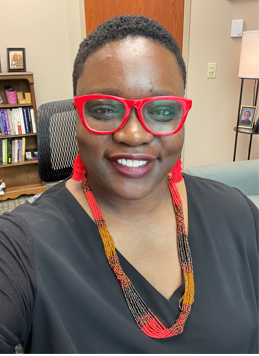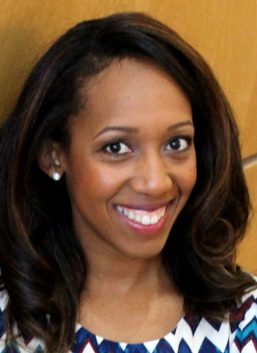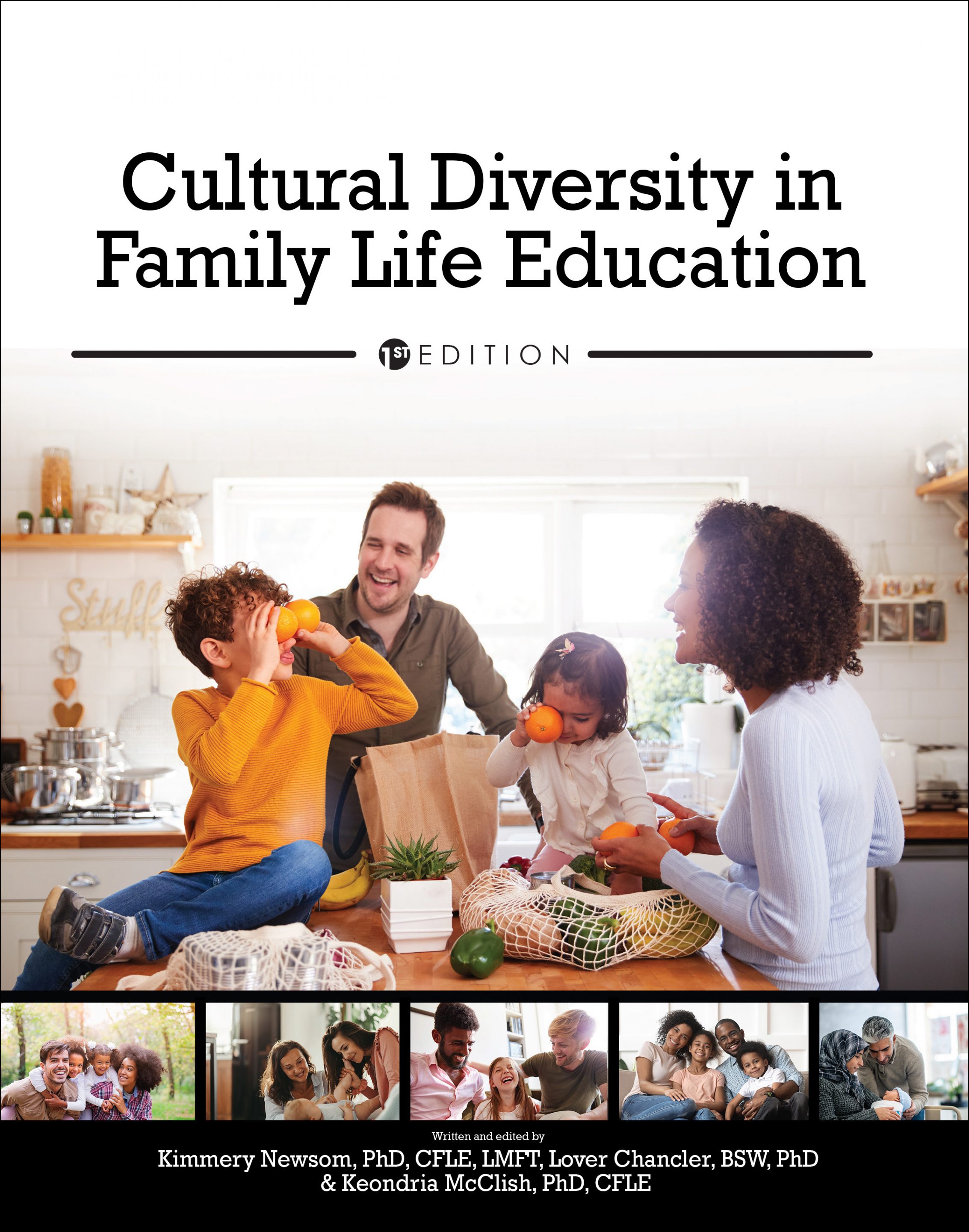What are your main areas of research or professional expertise?
Kimmery Newsom: Regarding my areas of expertise and research interests, I study resilience, childhood sexual trauma in women, and diversity education in family science. I have published articles and completed numerous national and international presentations in those research areas. Professionally, I have been a marriage and family therapist (LMFT) for over 15 years and am licensed clinically as a marriage and family therapist in Kansas and Wisconsin. Additionally, I am a Certified Family Life Educator (CFLE) and a Certified Sex Addiction Treatment Provider (CSATP). I have over 11 years of experience teaching in the college classroom. These experiences inform my teaching, and I was able to recognize that we needed a textbook specifically from family science researchers for the field of family life education.
Experiential reality is very significant when talking about culture and diversity. This is particularly true when teaching about ways that professionals and future professionals can become more culturally competent. I believe that the combination of book knowledge and experiential reality can give the learner an experience that will allow them to hold the information in their minds and spirits. This, in turn, makes it real, and they can see the real consequences of the lack of cultural competency in the field and society.
Lover Chancler: My main area of research examines the role race plays in one’s everyday interactions, whether it be at home, work, or in their communities, specifically for Black or African Americans. I also conduct research on the effects of racial socialization on biracial children.
With regards to my diversity, equity, and inclusion work (DEI), I am committed to helping others see through the lens of the marginalized and that, although we are different, we all deserve respect and have a role to play in making society great. I have developed trainings in this area for children, colleges, and businesses.
My experiences working with families as a social worker and probation officer have helped shaped the way I teach. My goal is to help students see everyone has a story, even them, and that respect for others to be who they are and their individual journeys will help them better serve them, as well as themselves.
Keondria McClish-Boyd: My research centers women of color and their psychosocial development. My most recent work focused on older Black women’s negotiations of spirituality and sexuality as informed by informal learning environments. In this work I used Black feminist thought, womanism, and narrative inquiry to create a framework for endarkened narrative inquiry, which was published in the International Journal of Qualitative Studies in Education. My experiences working as a qualitative researcher, and my background in gerontology and adult learning and leadership have shaped my onto-epistemological stance in adding women of color’s stories to the larger mosaic.
What inspired you to work together to create your own textbook?
KN: I was using several different textbooks and nonfiction books for my class. They each had some element of what I wanted to teach, but not all of it. Then, there was the fact that there was not a consistent family science component, which is needed when teaching HDFS students.
LC: After teaching several courses on diversity, I found that I had to use multiple textbooks and tons of supplemental reads because there was not a book that encompassed all facets of diversity.
KMB: After teaching a Families and Diversity course, I realized that the faculty were approaching the course from a perspective that was not inclusive of the intersectional identities of the people and families we would serve as practitioners. I brought this up to a couple of colleagues to consider how to best approach the course using material that was inclusive and provided varied perspectives. After conceptualizing what this may look like, Dr. Kimmery Newsom and I presented our ideas at the National Council on Family Relations conference and from that, the textbook grew.
What makes your textbook unique within the academic market?
KN: Our textbook is unique, because it brings the family into focus within the larger topic of cultural competence. Additionally, family science majors and faculty can use it for a variety of different classes to help bring in the cultural competence part of their subject matter.
LC: Our textbook looks at diversity in very broad sense. We cover race, age, gender, sexual orientation, religion, and even fatherhood. We also provide suggested assignments and additional readings. We help students see diversity is about more than just race and ethnicity. There are many things that help shape who we are.
KMB: Our textbook adds to the discussion on diversity and diverse families by trying to incorporate an intersectional aspect to topics related to families. By adding topics such as fatherhood, gaining, and religion we hoped to contribute an auxiliary perspective and provide more than a tourist approach to diversity.
What was the most challenging aspect of creating your textbook? The most rewarding?
KN: The most challenging aspect of writing the book was figuring out what content to include. There was so much that we wanted to incorporate, but we had limited space to do so. The most rewarding part is that the project came together nicely and we were able to produce a product that can be beneficial to the field for a long time.
LC: The most rewarding aspect was knowing that we were providing a resource to field that was so desperately needed. A close second was the collaboration with my coauthors; being able to receive validation on some things and a new perspective on others helped make the book that much richer.
KMB: The most challenging aspect was scaling back all of the ideas that we had. There were so many things that we talked about as a team and wanted to include that we just couldn’t in this first edition. The most rewarding part was seeing all of work and conversations come to fruition. This work is not only a manifestation of our many chats and visions, but this is a valuable resource for the field as a whole.
How have students responded to using your textbook in their courses?
KN: Students have responded very positively to the textbook. It has provided them with our experiential knowledge as well as the knowledge of different cultural experiences of family. The intersection of race, gender, class, religion, and sexual orientation provide and in-depth look at families, specifically the ways that these concepts intersect and affect their lives.
LC: The textbook was born from the desires of students in our classes asking for more. They wanted to have more than we could cover in my class during eight weeks. The first time I used the textbook, the feedback was: I like that, and if I want to learn more about a topic, there is guidance to do so. It also helps students in other classes that have singular focuses like just looking at race or gender.
KMB: The feedback from students has been very positive. The textbook is written to help students grasp concepts and apply their learning using the provided activities.






